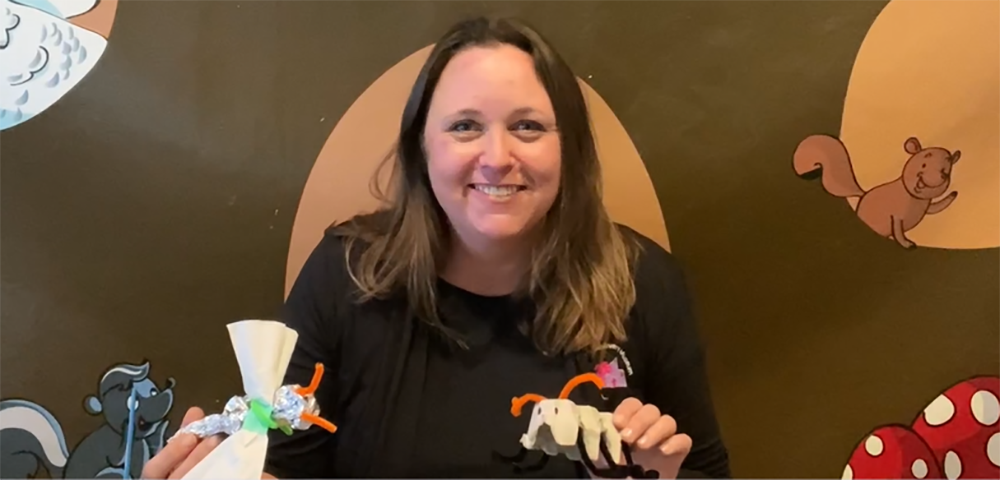
Build a Bug!
Create your own insect out of recycled materials! All insects have three parts to their bodies: the head, the thorax and the abdomen. They have two antennae on their head and have six legs. Insects are cold-blooded, which means that their body temperature changes depending on how warm or cold the air is around them.
MATERIALS
- Build your insect from natural or recycled materials found at home:
- Body Suggestions: egg cartons, cardboard, plastic silverware, toilet paper rolls, paper, cotton balls, bubble wrap, sticks, popsicle sticks, foil, or clothespins
- Antennae / Leg Suggestions: pipe cleaners, twist ties, toothpicks or paper clips
- Eye Suggestions: googly eyes, paper or markers
- Wing Suggestions: coffee filters, bubble wrap, paper, or leaves
- Scissors
- Tape and/or Glue
- Markers
- Paint (optional)
TRY IT!
- Look at the types of insects reference sheet (page 4). What type of insect would you like to make?
- Collect recycled materials from around your home. Older children can help think through the parts of an insect and collect materials with guidance. Younger children will be more successful if you provide a few options for them to choose from. Refer to the parts of an insect reference sheet (page 3) if needed.
- Before you begin, help your child organize the materials into categories: body, antennae, leg, wings, eyes.
- Hint: organizing materials and limiting options can be helpful so that young children do not feel overwhelmed with too many choices.
- Make a body. Think about the shape of your insect. What material can you use to make the body with? Paint or color the body if you like. Allow to dry before continuing.
- Add 6 legs (3 pairs) to the body of your insect.
- Add 2 antennae to the head of your insect.
- Add 2 eyes to the head of your insect.
- Does your insect have wings? If so, what materials could you use to make wings?
GUIDING QUESTIONS
- How does your insect move? Does it fly or does it walk?
- How can we attach the legs to the body?
- What color(s) would you like your insect to be?
LEARNING BEHIND THE PLAY
- Supports early math skills such as size, shape, and number sense.
- Develops decision-making skills through material and design choices.
- Strengthens fine motor skills through cutting, attaching pieces and coloring.
TAKE IT FURTHER
Bring your insect “to life” through pretend play! Pretend play allows young children to process the world around them and can help to develop empathy for living things in nature. Find a place outdoors to play with your insect. Look for a spot with lots of places for it to hide, gather food and explore. Imagine you are an insect – where would you like to explore?

